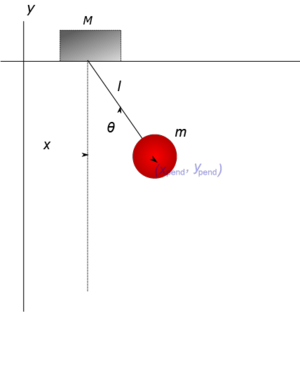Difference between revisions of "Matlab Primer"
| Line 12: | Line 12: | ||
:<math>\ddot\theta + \frac{\ddot x}{\ell} \cos\theta + \frac{g}{\ell} \sin\theta = 0.\, </math> | :<math>\ddot\theta + \frac{\ddot x}{\ell} \cos\theta + \frac{g}{\ell} \sin\theta = 0.\, </math> | ||
| − | See [Wikipedia|http://en.wikipedia.org/w/index.php?title=Lagrangian_mechanics&oldid=516894618] for a full derivation. | + | See [[Wikipedia|http://en.wikipedia.org/w/index.php?title=Lagrangian_mechanics&oldid=516894618]] for a full derivation. |
Revision as of 17:48, 3 November 2012
Today's lecture will be on MATLAB and PENDULA (plural of PENDULUM). Your next lab assignment motivated the topic.
My name is Sean Carver; I am a research scientist in Mechanical Engineering. I have been programming in MATLAB for almost 20 years and programming computers for almost 30 years.
This class is about MATLAB, not about deriving equations. So I am just going to give you the equations for the PENDULUM. There is still a lot to do to get it into MATLAB.
Pendulum on a movable support
This example comes from Wikipedia (copied legally). Consider a pendulum of mass m and length ℓ, which is attached to a support with mass M which can move along a line in the x-direction. Let x be the coordinate along the line of the support, and let us denote the position of the pendulum by the angle θ from the vertical.
See http://en.wikipedia.org/w/index.php?title=Lagrangian_mechanics&oldid=516894618 for a full derivation.

